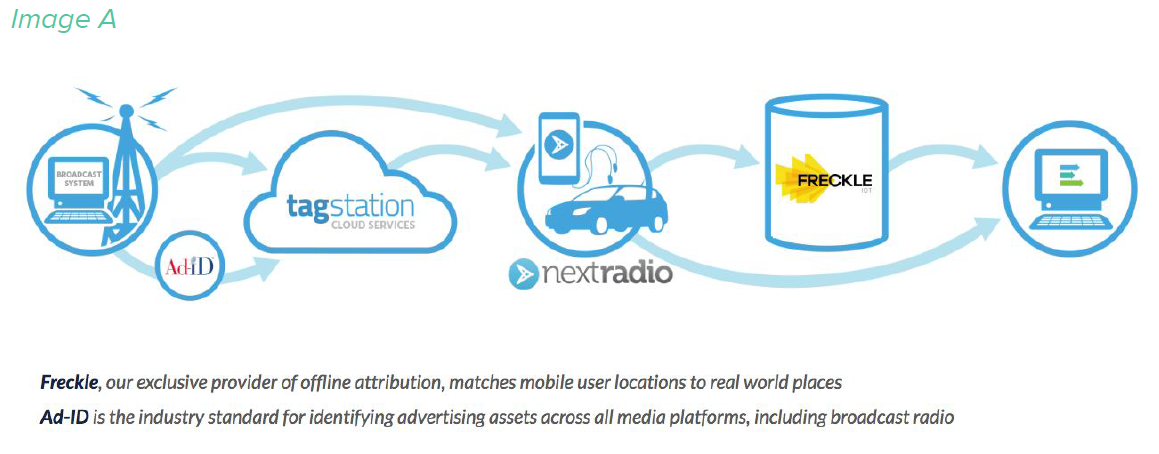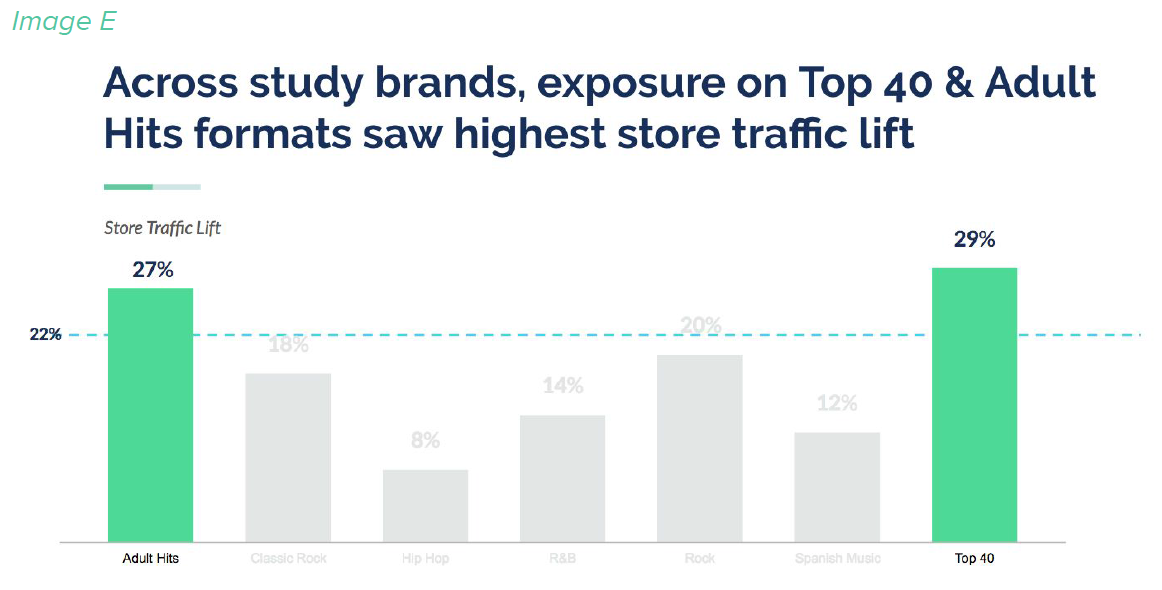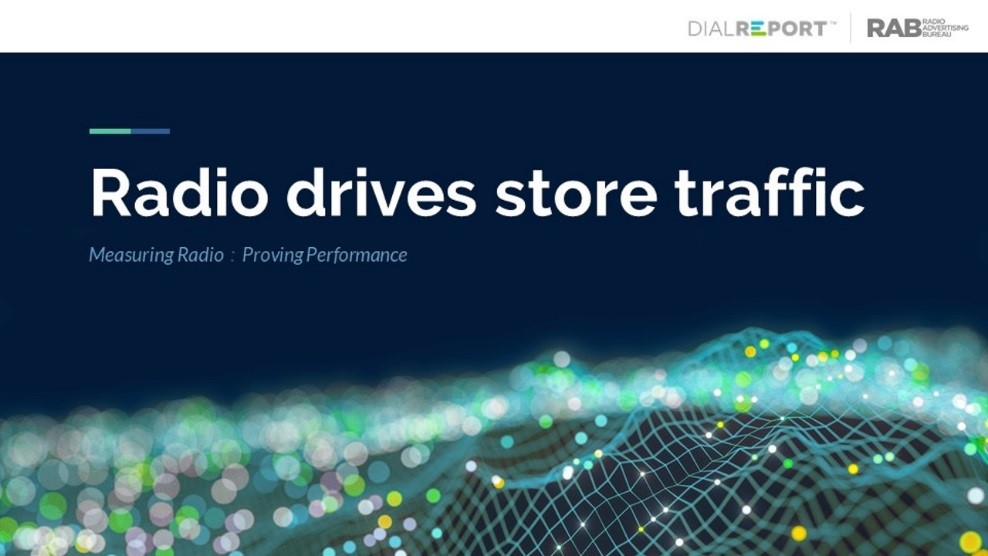On Average, Medium Delivers 22% Lift In Customer Visits To Brick-&-Mortar Locations.
The following is the Executive Summary of a report this fall between The Radio Advertising Bureau (RAB) and TagStation’s Dial Report.
As a truly mobile medium, radio is the medium closest to purchase. So, when a consumer hears a radio commercial, are they more inclined to visit the advertiser they heard? Does exposure to the radio commercial on certain days of the week have a greater influence on when they visit? Can radio advertising be attributed to a lift in store/location traffic?
Introduction
The shift towards data-driven advertising, within radio and across channels, has prompted advertisers to demand access to campaign performance data – data that broadcast radio has been challenged with.
Study Objectives
Advertisers need access to data for all mediums to get greater clarity on how much each channel contributes to overall campaign goals and objectives in turn optimizing media spend.
The goal of the study was to prove that data enables deeper targeting and contributes to the effectiveness of each particular radio buy. In this study we addressed the question: “Does Radio Drive Store Traffic?”
How the Study Was Conducted
For each of the 10 brands, Store Traffic data was matched to listeners on stations to which the spots played.
Average retail visits were calculated for those exposed to the spots and for a control group of unexposed visitors listening within the same timeframe.
The percentage change in average retail visits between the exposed group and the unexposed group was calculated – giving us Store Traffic Lift.
-April 1 – June 30, 2018
– Top 100 US markets
– Includes 10 brands across 4 categories
– Number of radio spot plays analyzed 1.5M
– Study covered 7 week days, variety of formats relative to each brand’s spots
– Of 515k FM smartphone listeners 107K were exposed to the radio spots
– Listeners were matched to Freckle location data
Study Highlights
Findings are based upon an analysis of over 1.5 million radio spot plays across 10 different brands and 4 categories.
– Radio drove an average increase of 22% store traffic lift for retailers
– Exposure to radio during PMD and over the weekend drove the highest foot traffic
– Radio’s ability to drive store traffic varied significantly by brand within category
Methodology
How It Was Done: The analysis was based on national spot plays across a cohort of large, well-known brands – capturing local listening with a wide reach. Each brand’s spots were evaluated for inclusion based on minimum target thresholds and guidelines set across various
measurements:
– Potential audience base
– Brand spot exposure
– Frequency
– Store visits
Data was collected through the Dial Report ecosystem. Radio station playout systems are directly connected to TagStation cloud service. Broadcast metadata is sent to TagStation through multiple sources including Ad-ID, the industry standard for commercial ad coding. This
process ensures the accurate delivery of FM + streaming radio programming and advertising content through the NextRadio app.

For each of the 10 brands, store traffic data was matched to listeners on stations where the spots played.
The control group – those not exposed to the spot – serves as our baseline, and addresses the question, “What results would be seen without spots?” Average retail visits were calculated for those exposed to the spots and for the control group of unexposed visitors listening within the
same timeframe.
Then we calculate the percentage change in average retail visits between the exposed group and the unexposed group – giving us Store Traffic Lift.

Study Findings
As noted in Image B, store traffic lift varied significantly by category and by brand within category. Across categories, lift varied anywhere from 4% for Home Improvement to 45% for Automotive.
Even within categories we saw variance. Looking at the two Automotive brands, for example, Automotive 1 had a lift of 18% and Automotive 2 had a lift of 45% – a 27% gap between the two Automotive brands. On the other hand, we saw little difference in store traffic lift among the
Home Improvement category. (Image C)

Daypart Exposure Performance: Listeners exposed to spots on the weekend and during PMD had higher average retail visits as compared to those listeners not exposed to the brand spots. Weekend overnight is reflective of QSR data. Most other brands ran few, if any, spots on weekend overnight. This demonstrates that access to data that enables audience targeting in conjunction with appropriate messaging is essential to KPI performance. (Image D)

Format Exposure Performance: We analyzed 23 different formats across the 10 brands and highlighted the 7 which were most encompassing of all the brands.
Looking at the format breakout, we found that listeners exposed to spots on Top 40 and Adult Hits formats had higher average retail visits as compared to those listeners not exposed to the brand spots. (Image E)

Conclusions
Radio’s ability to drive store traffic is highly influenced by accurate audience targeting within format, station, daypart and day of week. Every brand and category is different. Audience targeting within these segments is highly dependent on each brand’s demographic goals and campaign objectives. Through this study, we were able to show that lift in store traffic among those exposed to a brand’s spots were significantly higher than those who were not exposed. Therefore, radio does drive store traffic.
